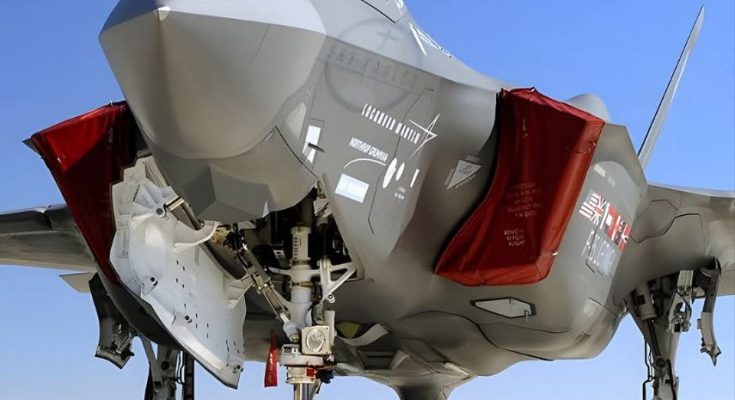F-35 Lightning II: Lockheed Martin’s Stealth Multirole Combat Jet for Air Superiority
The F-35 Lightning II, developed by Lockheed Martin, is one of the most advanced and versatile stealth multirole combat aircraft ever created. A true game-changer in modern military aviation, the F-35 was designed to meet the complex demands of 21st-century warfare. It combines advanced stealth technology, superior maneuverability, and cutting-edge avionics to provide unmatched air superiority, ground attack capabilities, and intelligence, surveillance, and reconnaissance (ISR) functions. With its three variants—the F-35A (conventional takeoff and landing), F-35B (short takeoff and vertical landing), and F-35C (carrier-based)—the F-35 has become the backbone of air forces and navies across the globe.
The Birth of the F-35 Lightning II
The development of the F-35 began in the early 2000s under the Joint Strike Fighter (JSF) program, a collaboration between the United States and its NATO allies. The goal was to create a fifth-generation fighter that could serve multiple roles, including air superiority, close air support, and precision strike, while also incorporating stealth capabilities to evade enemy radar. The F-35 was meant to replace aging platforms such as the F-16, F/A-18, and AV-8 Harrier, offering unmatched versatility at a lower cost than developing separate aircraft for each mission.
Lockheed Martin’s design for the F-35 was chosen after an extensive competition and development phase. The result was an aircraft that could perform traditional fighter roles while also offering the capability to operate from short or even vertical takeoff-and-landing (VTOL) environments, making it adaptable to a variety of operational needs.
Stealth and Advanced Technology
One of the key features of the F-35 Lightning II is its stealth capabilities, which are essential for operating in contested environments. The aircraft is designed to minimize its radar cross-section, making it difficult for enemy radar systems to detect. Its angular design, radar-absorbent materials, and cutting-edge coatings ensure that it remains virtually invisible to most radar systems, allowing it to perform strike and surveillance missions deep within enemy territory without being intercepted.
The F-35’s advanced avionics suite is equally impressive. It features the AN/APG-81 radar system, which offers long-range, high-resolution targeting and situational awareness. This radar, combined with infrared sensors and an advanced electronic warfare suite, gives the F-35 the ability to detect and engage threats at greater distances and with greater precision than previous-generation fighters. The pilot also has access to a comprehensive suite of data from multiple sensors, displayed on a single integrated cockpit screen, ensuring that they are always aware of the battlefield environment, even in complex, high-threat scenarios.
Multirole Capabilities
What truly sets the F-35 apart is its multirole capability. While many fighter aircraft specialize in one role—whether that be air superiority, ground attack, or reconnaissance—the F-35 is designed to excel in all these areas simultaneously. Its flexibility means that it can engage a wide variety of targets, from enemy aircraft in dogfights to heavily defended ground targets, with high precision and low risk of detection.
The F-35’s internal weapons bays, designed for stealth operations, can carry a range of precision-guided munitions, including air-to-air missiles, laser-guided bombs, and air-to-ground missiles. Additionally, it can carry external weapons for larger payloads when stealth is not the highest priority. This ability to switch seamlessly between different mission sets makes the F-35 an essential asset in both offensive and defensive operations.
The Three Variants
The F-35 was designed with three different variants to serve different branches of the military:
- F-35A: This variant is designed for conventional takeoff and landing (CTOL) and is the version most commonly used by air forces. It is equipped for a wide range of missions, from air-to-air combat to precision ground strikes.
- F-35B: The F-35B is the short takeoff and vertical landing (STOVL) variant, designed for use by the U.S. Marine Corps and allied forces operating from amphibious assault ships or forward-operating bases. It has the unique ability to take off and land vertically, giving it unmatched flexibility in unconventional operating environments.
- F-35C: The F-35C is designed for carrier operations, with larger wings and reinforced landing gear for use aboard aircraft carriers. It can conduct missions from the sea, making it a crucial asset for the U.S. Navy and other allied maritime forces.
Global Impact and Future Potential
Since entering service, the F-35 Lightning II has become the primary fighter for many of the world’s most advanced air forces, including the U.S. Air Force, Navy, Marine Corps, and several NATO allies. The versatility of the F-35 makes it a true force multiplier, capable of executing missions that once required multiple different aircraft.
Looking ahead, the F-35’s combination of stealth, advanced sensors, and multirole capabilities ensures it will remain at the forefront of air combat for decades to come. Its ability to integrate with other systems in joint operations—such as its data-sharing capabilities with other allied aircraft and ground systems—further strengthens its position as a key player in the future of modern warfare.
In conclusion, the F-35 Lightning II is more than just a fighter jet; it is a versatile, stealthy, and highly capable platform that represents the future of air combat. Its advanced technology, combined with its ability to fulfill multiple roles, ensures that it will continue to be the centerpiece of military airpower for many years to come, shaping the future of air superiority and global security.



